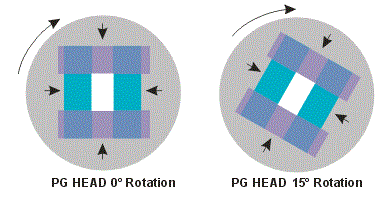

When polygons have "holes", "islands" or "cutouts" there are a number of ways to represent this information since GDSII has no concept of holes inside of boundaries.

Cut Lines - a "cut line" runs from the outer perimeter of the polygon to the inner perimeter and then back out again along the same path.
Butting Edge - the polygon with a hole is sliced into two or more polygons that don't have holes. The edges of the sliced polygons butt up against each other.
Leonov - similar to embedding but child polygons belong to a parent.
Embedding Level - polygons are sorted by layer for each change of polarity.
Most downstream GDSII applications don't understand Embedding Level or Leonov so only use those options when you know your target understands the meaning of the sub layers.
PG Compatible - if checked, makes the output polygons compatible with a pattern generator (which uses two pairs of shutter blades mounted on a rotating head - essentially can print rotated rectangles. This output avoids acute angles which the PG head cannot print.)
